For all of the disasters that bedevil American military procurement, we can always look to our closest ally, the UK, when we need to feel better about our ability to buy weapons. Twice in the last 40 years, the British have poured enormous sums of money into an airplane, and walked away empty-handed. To make matters worse, it was the same airplane both times, the Hawker Siddeley Nimrod.1 I thus feel confident awarding the Naval Gazing Worst Procurement Ever trophy to the Nimrod.

The Nimrod MRA4
The Nimrod2 was developed in the 60s from the De Havilland Comet, the world's first jet airliner, an airplane most famous for a series of crashes caused by fatigue cracking early in its career.3 But the Nimrod was based on a later Comet where they'd fixed that problem, and initially proved to be a reasonably good aircraft, being upgraded from the initial MR1 variant to the later MR2 maritime patrol and R1 signals intelligence versions.
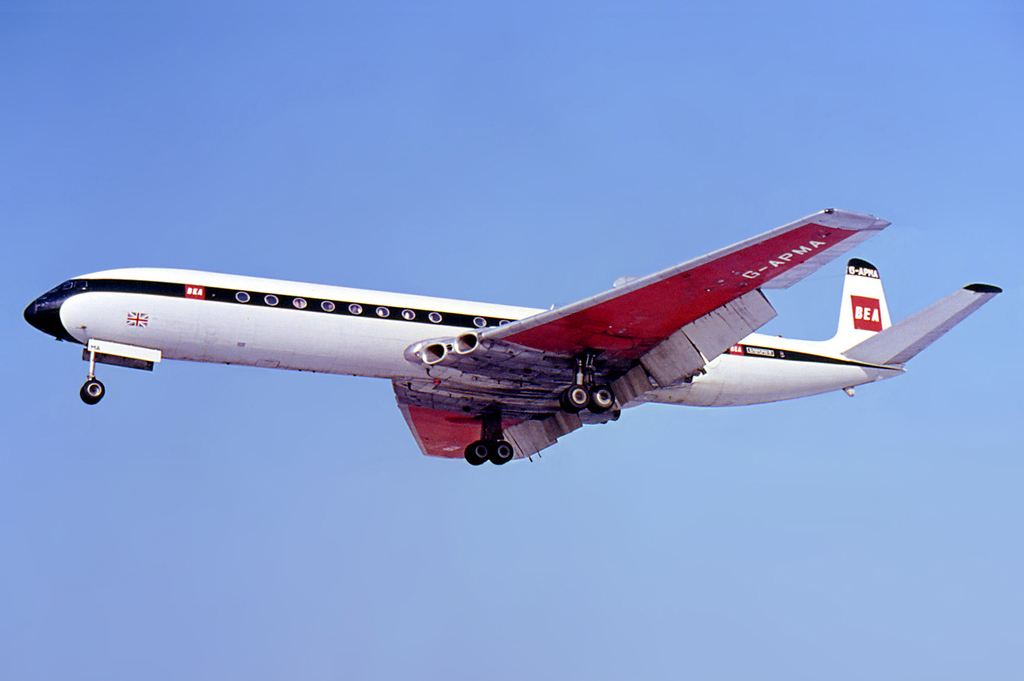
de Havilland Comet 4
Things began to go wrong in the mid-70s, when the British decided to introduce an AWACS4 aircraft to support their air defense efforts. They had several options. The E-2 Hawkeye and E-3 Sentry were both about to enter service with the USN and USAF respectively, and were rapidly proving themselves to have excellent radar systems during trials. The British could have had either aircraft, or bought their radar systems to integrate into an aircraft of their own. Or they could have only bought a few subcomponents, like the antenna or the radar transmitter itself, and built the rest domestically.
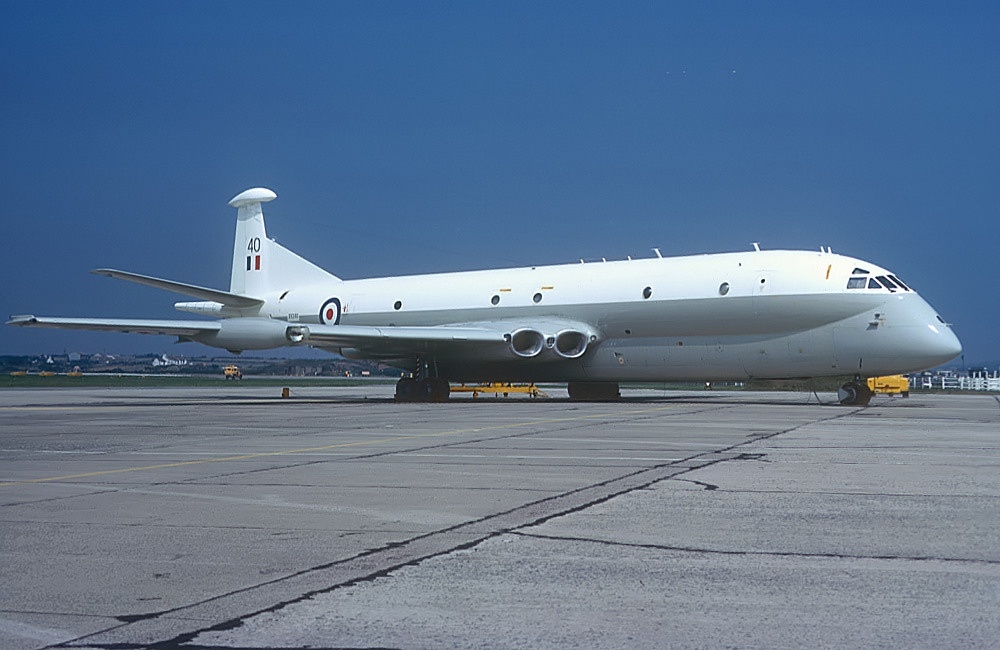
Nimrod MR1
They decided to take none of these options. Instead, they would produce an entirely new radar system. Instead of an American-style radome, separate antennas would be installed in the nose and tail, and the system would sweep through one, and then the other. This was far more expensive and much riskier than buying from the Americans, but it did produce a lot more jobs in the British defense industry, which was apparently the government's prime concern. In 1977, a contract was placed, making BAE and GEC-Marconi co-leads on the project to convert 11 surplus Nimrod MR1 airframes to the new configuration.
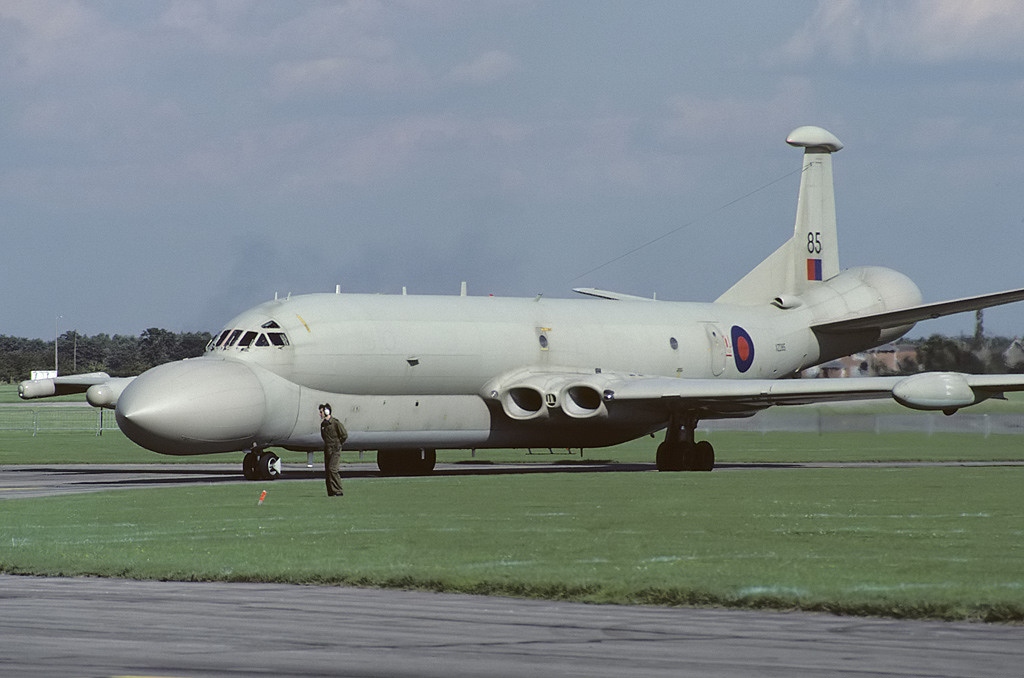
Nimrod AEW3
As might be expected based on that kind of decision-making, the resulting airplane had problems. The computer system chosen wasn't powerful enough to integrate all of the data, particularly the area where the nose and tail radars overlapped. It was also horribly unreliable, with a mean time between failures of only two hours, in a system which took 2.5 hours to load the mission data from the tape. The Nimrod, considerably smaller than the American Sentry, was unable to carry more equipment to solve this problem. Different electronics racks were earthed to different points in the airframe, and the resulting potential differences caused false tracks to appear, overloading the computer even more. To make matters worse, most of the electronics units weren't interchangeable for reasons that were never entirely clear. If one unit failed, several spares had to be tried before one that worked was found. The only system that functioned reliably was the IFF system, which could only track friendly aircraft and airliners. This was a major handicap in an aircraft intended to detect Soviet bombers.

Avro Shackleton
There were other effects of the unusual configuration. The radars on the Sentry and Hawkeye could be mostly air-cooled, but Nimrod's nose and tail radomes couldn't, and a special system was installed which dumped the heat into the fuel. The major drawback to this system was that it didn't work when the fuel tanks were less than half full. All of these problems meant that the in-service target of 1982 was handily missed, and by 1986, the cost had escalated from the £200-300 million originally estimated to around £1 billion. At this point, the government finally pulled the plug, and decided to buy the Boeing E-3 Sentry instead. These finally began to enter service in 1991, replacing the Avro Shackletons the British had introduced 20 years earlier as a stopgap until Nimrod arrived.5

Boeing E-3 Sentry
But the Nimrod story wasn't over. In the early 90s, the RAF began to examine options for a replacement for the MR2 in the maritime patrol role. Lockheed offered an upgraded version of the P-3 Orion used by the US Navy, and Dassault offered its Atlantique, while BAE chose to offer a Nimrod modernization over a variant of the Airbus A310 airliner. The Atlantique was soon eliminated due to the RAF's unwillingness to consider a twin-engine MPA,6 and the Nimrod soon emerged as the winner of the competition. When asked about the structural problems inherent in trying to make a 30-year-old airframe last another 25 years, BAE claimed that the risk to the program of retained airframe items was "low," and that the Nimrod was "probably the best-understood airframe in the RAF inventory." These were claims which would come back to haunt them.
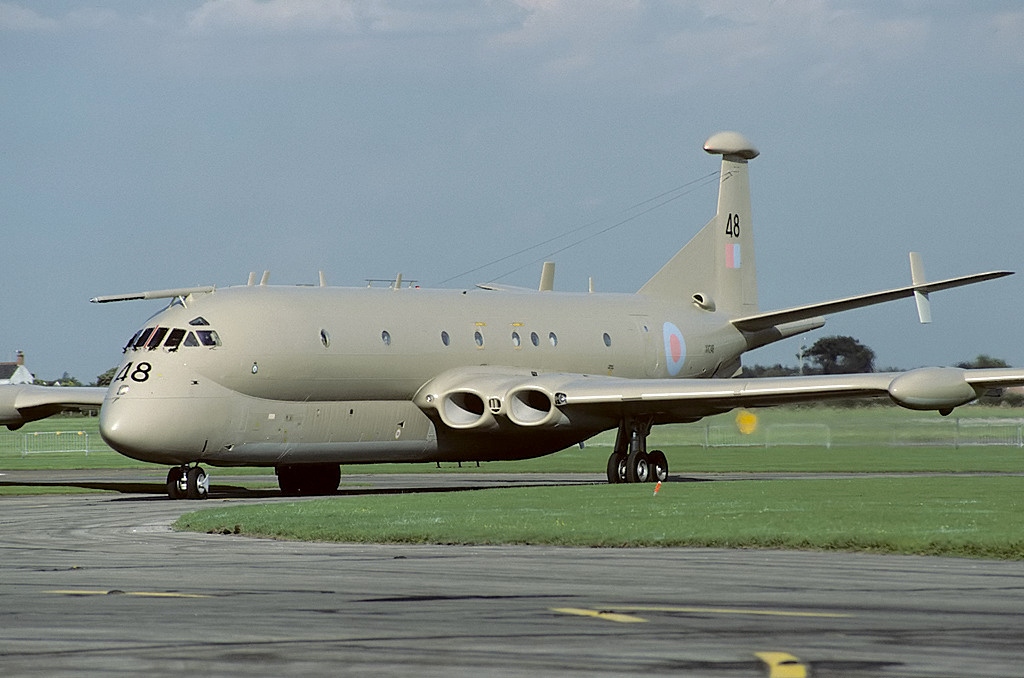
Nimrod MR2
In 1996, a contract was issued for the new aircraft, designated Nimrod MRA4. 21 aircraft were to be produced at a cost of £2.8 billion, and they would be essentially new airplanes, with only the fuselage structure being retained. The antique Spey engines would be replaced with modern BR700s. These engines were significantly larger, and required much more air, forcing BAE to design a new, larger wing.7 The combined effect of these two changes was to double the Nimrod's range and improve performance. Inside, the flight deck was replaced with one derived from the A340 airliner, and the mission systems were to be all-new.
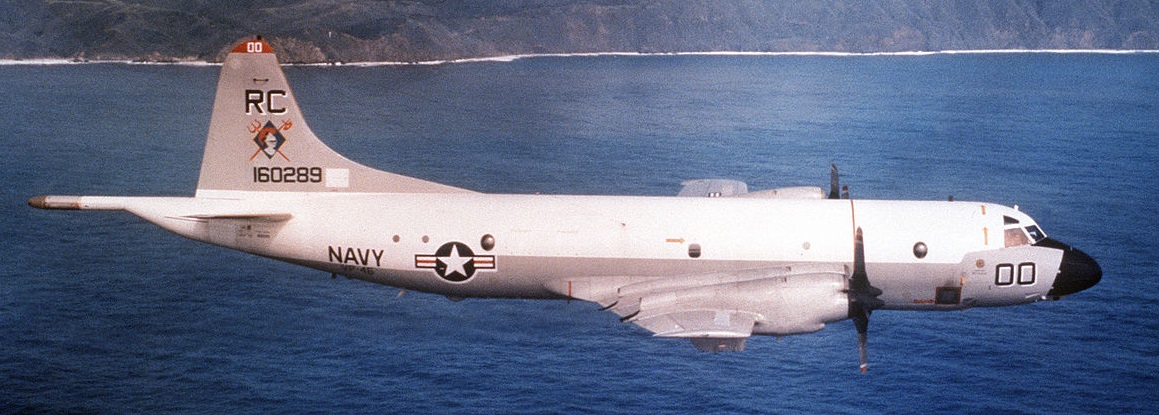
P-3 Orion
A fuselage was sent to be reverse-engineered for the design of the new wing, and BAE designed and built it, then pulled in another aircraft to make the modification. And discovered that the wing didn't fit. Apparently, the problem dated back to the initial construction of the aircraft. When positioning the frames, Hawker Siddeley had not done what all sensible manufacturers did, and measured from a common baseline. Instead, they had positioned each frame with a tolerance relative to the previous one, which meant that the position of the wings varied by as much as a foot across the fleet. Worse, the aircraft they had designed the wings for was one of the most extreme in wing position, so the new wings didn't fit most of the other aircraft.8 This forced a redesign of the wings, further delaying the program.
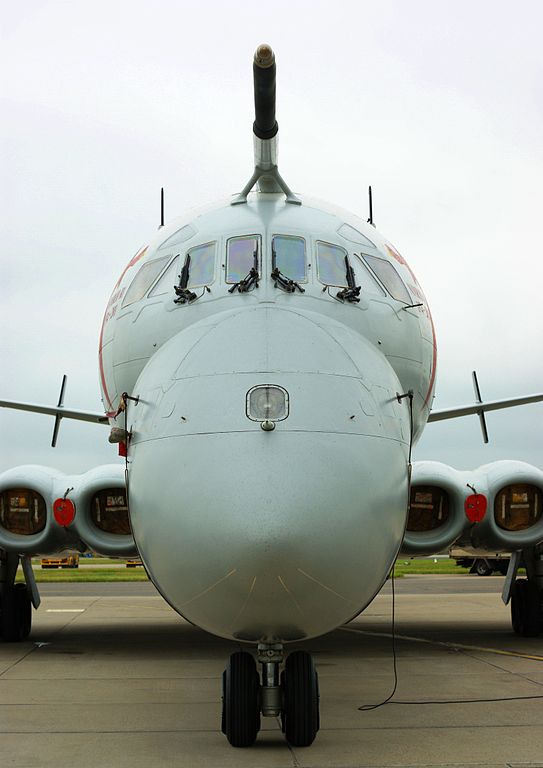
Nimrod R1
This started the MRA4 on its own spiral of delays and cost overruns. The original contract had the first aircraft entering service in 2003, but by 2002, this had slipped six years, and the number of aircraft to be procured was cut from 21 to 18. From this point on, there was a steady drumbeat of cutbacks. In 2004, another two aircraft were deleted, followed by four more two years later. In 2008, the number was down to nine, and when the first aircraft was delivered the next year, there was more bad news. Budget cuts meant the new Nimrod would not be operational until 2012, nearly a decade after it was supposed to enter service.
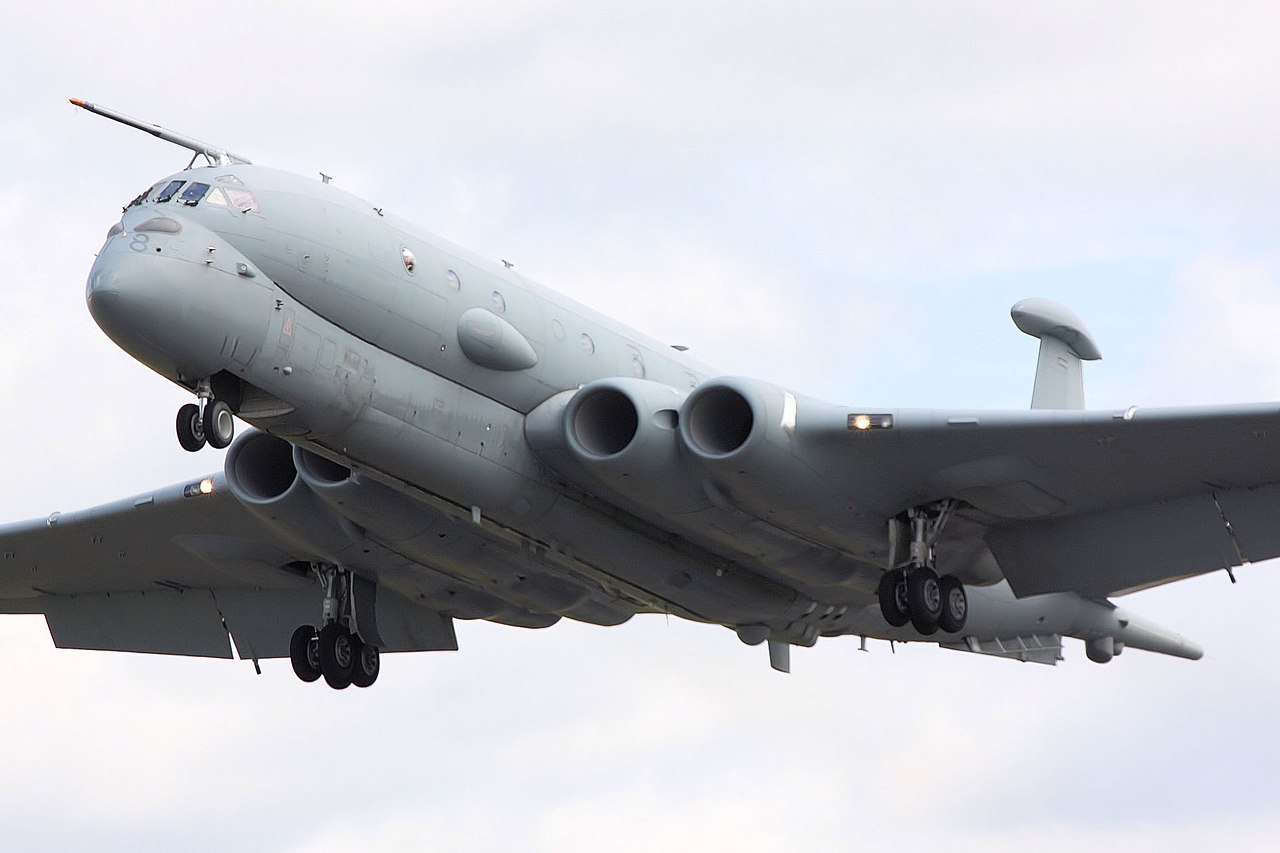
Nimrod MRA4
The end came with the 2010 Strategic Defence and Security Review, which announced that the MRA4 program was to be shut down immediately, and the existing airframes scrapped. This was immediately controversial, as £4 billion had been spent, and the aircraft was apparently on the verge of entering service. Many charged that the MoD had wasted an immense amount of money and left the UK without a maritime patrol capability for no reason. Others claimed that the aircraft was still far from being truly operational, as BAE had yet to solve numerous design flaws, including landing gear that didn't work, leaking fuel pipes, and overheating engines. To fix these would have taken another £1 billion, and required several more years. I strongly suspect that the latter is much closer to the truth.
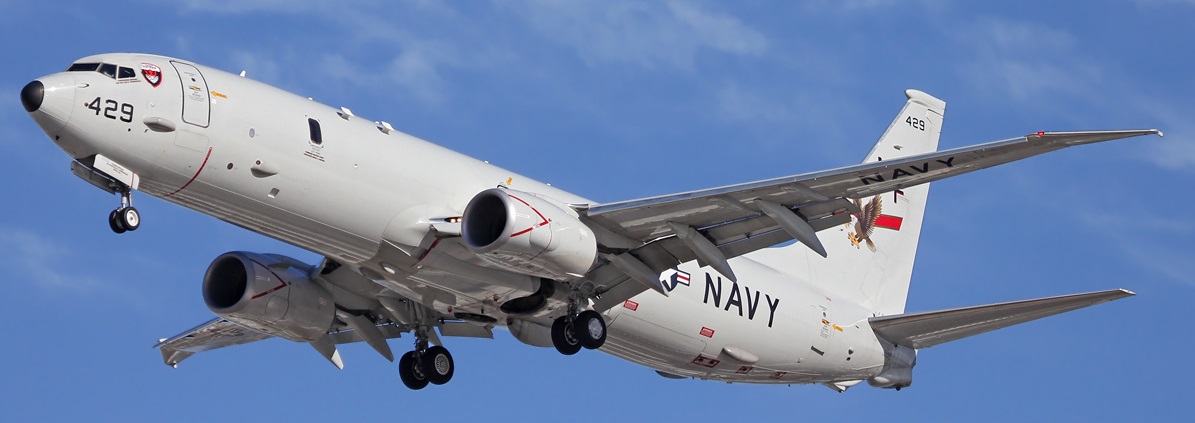
Boeing P-8 Poseidon
Five years after the demise of the Nimrod, the British decided to reenter the MPA game, buying P-8 Poseidons from Boeing. The P-8 is also a modified airliner, a variant of the Boeing 737 best known for carrying everyone everywhere, but Boeing is much better at building airplanes than Hawker Siddeley, and the airframes are all-new.9 There is an interesting symmetry to the situation, however. Boeing was a partner on the MRA4, working on the mission systems, which appear to have been the only part of the airplane to work well, and this work was fed into the P-8.
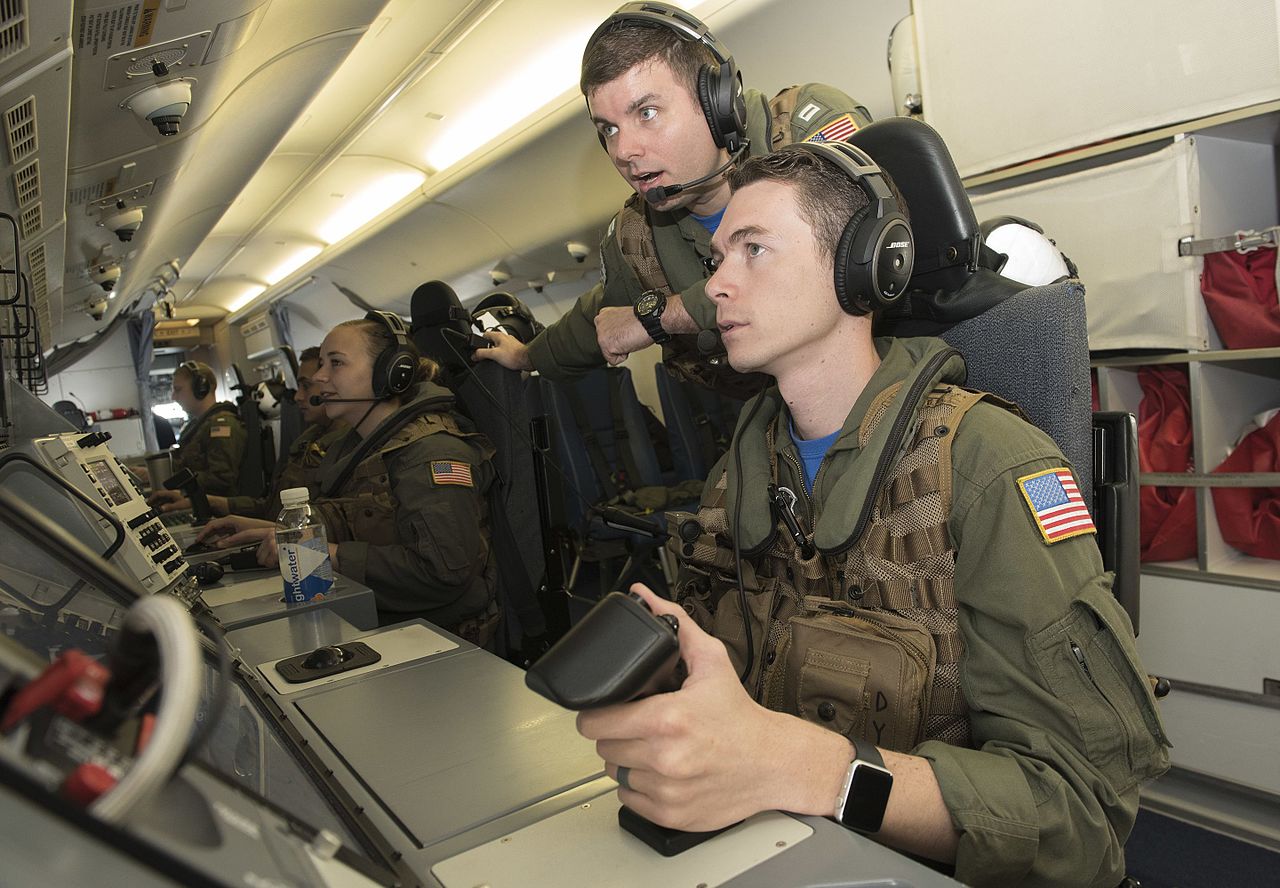
The interior of the P-8
Besides a good laugh, the Nimrod story provides us with valuable lessons. In both cases, BAE was able to sell the Nimrod through a mixture of political maneuvering and promising things they couldn't deliver. This is hardly unique to Britain, and many of the same problems are visible in the JSF program. In that case, the US has proven willing to keep spending money, and appears to have spent enough to get a pretty good airplane out the other side.10 Allowing political requirements to drive defense decisions rarely ends well, although the outcome is usually not as stark as it was on the AEW3 and MRA4 programs.
1 "Nimrod" is a reference to a biblical "mighty hunter" from Genesis 10. In this case, the American slang meaning of the term (which comes from the sarcastic use of the name for Elmer Fudd) is appropriate, too. ⇑
2 It's commonly believed that the specification for the competition the Nimrod won was written around the Breguet Atlantique. Politics probably dictated the selection of a domestic aircraft. ⇑
3 This is commonly ascribed to the fact that the designers didn't know that sharp corners on the windows would concentrate stress and lead to early fatigue. The problem with this rather simple explanation is that the Comet was far from the first pressurized airliner. That honor goes to the Boeing 307 Stratoliner, which entered service in 1940, 12 years before the Comet, and never suffered anything like the Comet breakups. There were several other pressurized airliners which preceded the Comet, most notably the DC-6, some of which are still flying in Alaska today, and which never suffered similar problems. It appears that De Haviland was tripped up by the use of a single test article for both ultimate strength and fatigue testing, as the high-pressure test made it more resistant to fatigue than the operational aircraft. ⇑
4 Airborne warning and control system. Essentially a plane packed with radar, which can see much further than it can sitting on the ground, and a crew to manage an aerial battle. ⇑
5 It probably bears pointing out that the Shackleton was descended from the famous Avro Lancaster bomber of WWII, and was using a radar that had been developed during WWII. The Sentries themselves have recently been ordered replaced by a new aircraft based on the popular Boeing 737. ⇑
6 This was another bad decision in a story full of them. Modern jet engines are reliable enough that mission capability is slightly enhanced by having only two engines. Multiple engine failures are overwhelmingly caused by common factors, and four engines are no more use than two if you run out of fuel or fly through a cloud of volcanic ash. On the other hand, single-engine failures, which cause an abort but don't generally endanger the plane, are twice as common on four-engine aircraft, actually reducing reliability. ⇑
7 This was another case where the Nimrod/Comet design came back to bite them. Most airliners carry their engines on pylons, which makes changing engines relatively easy, but the Nimrod has its buried in the wing root. ⇑
8 Unlike the rest of this post, I don't have formal sourcing for this. The information comes from friends in the UK aerospace industry. Apparently, there was a section in the original plans marked "add 18" and cut to fit" to deal with this problem. ⇑
9 I've occasionally suggested in jest that the MoD is going to ask Boeing to fit the P-8 systems to old 737-400s, the predecessor aircraft to the 737-800 that the P-8 is based on. Fortunately, this is no longer a threat, as Poseidon MRA1 became operational with the RAF in April 2020. Interestingly, two of the three new 737 AWACS planes procured for the UK were former commercial aircraft rather than new-builds. ⇑
10 This may not have been possible on the Nimrod, due to the airframe issues. The B-52, an aircraft of an age comparable to the Nimrod, is currently scheduled to get a series of upgrades that together rival the MRA4 program in scope. Unlike the Nimrod, the B-52 has a long record of successful upgrades, and there's no reason to believe these programs will have more trouble than usual for defense procurement. Some of this is because the B-52 upgrades are incremental and decoupled, and some is because Boeing knew what it was doing when it built them in the first place. ⇑

Comments
It’s certainly interesting, and a bit tragic, comparing the Comet/Nimrod failure to the wildly successful 707 and its myriad military variants that are still flying (after many upgrades) in large numbers today.
There are good reasons why nothing looks like a Comet anymore, while basically every large commercial airliner looks like a 707 if you squint.
The only difference you can see if you squint is the engines. And yes, buried engines are a bad design choice, because it makes it hard to get to them, and hard to upgrade. But the other half is userbase. The US used the 707 as its default utility airframe for decades, and sold them to a bunch of other people. Combine with proper building techniques on Boeing's part, and it's not too hard to see why it won over Comet. The victory over the DC-8 is harder to explain, but I'd guess it had to do with the (fairly minor) commonality with the KC-135.
This is key, I think. Improving a part here and there is much easier to manage than starting from scratch. Of course, it means that you end up flying a Gen 8 Mig-21, rather than anything new, so at some point you do have to bite the bullet and do the clean sheet redesign. (Though the 737 is another example of a good design that keeps getting upgraded)
And if we really need a pick me up, we can look at Canada!
Wait. Canada can procure weapons?
I cannot fault planners completely for wanting to rely on a four engine aircraft at the time they were making decisions although they are not totally free from blame. If they had just been able peer a little farther over the horizon when two-engined options were in the offing they might have avoided this boondoggle...granted in-country jobs and other factors might have even then prevented better cost decisions.
You mention a numble of the factors that reveal why having four engines under the wings is not automatically better than just two and modern flight ops have proven what you describe to be true in that more diverts are made for reasons other than an engine failure/malfunction. There are great discussions to be found from Boeing, Airbus, and the engine manufacturers on the genesis of Extended Twin Operations (now often called just Extended Operations).
It took serious statistical study of why flights divert, advancements in engine technology, and other quite interesting aspects of ops to bring about the staggering reliabilty of twin operations and confidence we now have in them. That planners were enslaved to that four engine mentality cost, from your description, the British taxpayers a lot of money.
Nothing better than something that has been tried and true and thus the Navy's decision to go with a 737 variant was a good one reminiscent of the old COTS concept. Of course for the Navy the bottom line question is how reliable and effective the platform is on station and in the battlespace. I imagine that engine problems are an extremely small slice of the reasons why this aircaft would not fulfil its maritine taskings and that operators wrestle with other issues.
Again though, it took the confluence of a number advancements to yield the reliabilty that a platform like the P-8 enjoys. Not sure I would have been prescient enough to have tipped my hat toward a twin back when some of these decisions were being made.
If I had to pick a time when it was becoming obvious that modern jets were reliable enough, it would be the early 90s, precisely when the Nimrod replacement contract was being competed. That's the era when the 777 was introduced, and it was the first airplane to have ETOPS out of the box.
I suspect that the four-engine requirement had a lot more to do with the need to eliminate teh Atlantiqe than anything else. BAE may be terrible at hadware, but they're great at the political aspects of procurement. I believe something similar happened when the Navy bought the Hornet. They'd been flying single-engine jets for a couple decades and had no major issues, but then suddenly having two engines becomes vital as soon as it's needed.
Lol, this reminds me of the old Russian joke.
USA steals blueprints of the secret Soviet fighter. Their best engineers work on reproducing the machine. They build it exactly according to the blueprint. After the final assembly, they have a tank. The engineering team checks if they read the blueprint correctly, but everything seems fine. They translate the documentation again, but everything once again seems to be in order. Finally, a Soviet engineer who recently defected to the West is brought on scene. He looks into the documents and finally says: "Well, what is that you don't understand? Right here, written in plain English -- "After final assembly file down to size.""
@Inky,
There is another Russian joke like this.
A woman works at a mattress plant, and yet she can never buy a mattress because of rationing. Her cousin says, "That's too bad, maybe if you take a part home every month you can make one at home and nobody will notice?" The woman responds, "I've tried that three times, but every time I get a Kalashnikov, not a mattress."
I know I am late here : )
Regarding the Hornet, I used to work at McDonnell Douglas (C4I part), and while working there I met a couple of old timers who had known Mac (James S. McDonnell, founder of McDonnell Aircraft). The urban legend was that Mac felt so burned by the failure (including accident rate) of the F3H Demon (which was designed around the never to work right Westinghouse J40) that he instituted a rule, which was followed by his nephew Sandy McDonnell as well, of no single engine aircraft, which you will note continued to be true - the only single engine A/C McD-D manufactured all started out as designs elswhere (A-4, AV-8, T-45).
It's interesting that AFAIK the only single engine US design for a carrier A/C where the design effort started after the early 1950s was the A-7 (admittedly, by then it was basically just McDonnell and Grumman in the game, but still). Until the JSF/F-35C, of course.
Going international we can add a few more (Etendard/Super Etendard, Harrier family, the YAK-38 and 141, and the not yet in service STOBAR version of the HAL Tejas).
It's quite possible that the Navy's aversion to single-engine jets goes back to the J40, which at one point was supposed to power everything in the Navy's arsenal. Even the A-7 was essentially an F-8 deriviative, and I think that predates the whole J40 mess.
I'm not sure it's rational, though. A bad engine isn't going to power a good plane, no matter how many you add. I'd rather fly with one modern engine than 4 J40s.
The F8U was, according to what I have read, designed around the J57 from the beginning, as opposed to both the F4D and F3H (and also the A3D, plus the XF10F which AFAIK was only ever intended as a research aircraft). I don't know of any other aircraft originally designed for the J40. The F4D (and A3D) design was easy to adapt to the J57; the F3H not so.
I'm not sure how much the USN's aversion dates to the J40, but from what I was told McDonnell's aversion does.
As far as the Hornet specifically, I don't know the details of the design choice of two small (J85) engines versus one bigger engine in the F-5 (presumably not maintenance costs, unless the J-85 was notably less overhaul intensive that e.g. the J-79), but the two small engine concept stayed in the Northrop legacy (F-5 -> P-530/P-600 -> YF-17) that led to the Hornet.
Friedman has a long discussion of all of this in Fighters Over the Fleet, which I've been too busy to check. I'll take a look tomorrow. It probably bears pointing out that the F-20 was to be single-engine, and it was a Northrop project only a few years later than the YF-17.
I've been meaning to grumble about this for some time, but I really don't think you're being fair to de Havilland here. Compare the Stratoliner's 2½ psi pressure differential to the 8 or so the Comet ran (cruising as it did at about twice the altitude), and it's clear that the Comet was in a new regime structurally.
If there's anything that was "fairly typical of the company", it was a tendency to design for aggressive cost-optimisation, a habit they learned when trying to create viable civil aircraft for the tiny pre-war British and colonial short-haul markets (for example, as much as people like to holler about the DC-3's economics, there's no way it could have filled the niche that, say, the Dragon Rapide did).
It's not so much that Boeing and others were better at building aircraft, more that they had the luxury of being able to solve problems by throwing money at them, in a way that really wasn't an option for perennially cash-strapped Britain. You could argue that in that case British firms shouldn't have been attempting to push back the frontiers on their shoestring budgets; but given how much of American technology consists of commercialising advances first developed by Britain, if we don't do it, who will?
I've got no excuses to make for Nimrod, though. That shit was amateur hour :(
Fair enough that the Comet is operating in a different regime than the Stratoliner. On the other hand, I can easily point to another pressurized airplane that did operate in a very similar environment, was introduced two years earlier, and had an order of magnitude more planes built. I speak, of course, of the B-47. It was a plane with many problems, but structural failures weren't one of them. And it was a clear predecessor to the 707.
I could also point to the problems on Liberty Ships as a clear example of stress concentrations being known well before the issues with the Comet showed up.
Also the Avro Canada Jetliner and the Tu-104.
ec429:
While making such a crap aircraft that one of those colonies switched to buying American.
Reading through the Comet crash report the key failing of the Comet seems to me was that they didn't do detail stress analysis on the windows because their airworthiness certificate allowed them to demonstrate safety by testing, but they were allowed to use the same test article for their static and fatigue tests of the aircraft - and the "current state of knowledge" at the time that this was an ok thing to do (this is very much not an ok thing to do for an aluminum structure, though steel you can mostly get away with this).
As far as I can tell the lessons from the Liberty Ships really had no bearing on the failures of the Comet - they knew they had to check for fatigue and they did so - however they did so on the static structural test article which that had already exposed to a 2x proof pressure first, which meant they strain relieved all the corners around the windows on the test article during the proof test causing them to pick up something like 10x extra fatigue life over what the base condition of the hardware should have had - for steels the affect would have been much lower, maybe a 2x fatigue life screw-up, which is well within the typical faituge life scatter factor considered in typical design (4x scatter for tested structure and 10x scatter for untested structure is a good general design principle used in modern aerospace engineering).
Sure the windows being square was dumb, and rounded corners are better for stress concentrations - but you can do dumb things if you test appropriately and have margin against the dumb thing - here they seem to have though they did that, but really didn't understand aircraft testing (there are other cardinal sins pointed out in their structural test plan in the report that make my skin crawl as a structural analyst...nothing in the design decision section to me seems too egregious, but they really really screwed the testing).
I'm grateful to Bean/ec429 for this - the assertion on stress concentrations being the core issue has bugged me for a long time (the Comet comes up as a 1 slide on introduction to fatigue/fracture lectures all the time) but I never really dug into what the whole testing/manufacturing/design/operations loop on how the problem occurred. The failure report makes it quite clear they understood the 101 level details on fatigue cracks and thought they had tested their way out of the problem. The question of "why didn't anyone know how to do testing" now bugs me (Part XIV subsection D) - the report makes it sound reasonably clear that while it was not an unknown concern, avoiding pre-stress in your fatigue test article was not considered important as a matter of course at the time and I'm struggling to think of why that wouldn't have blown up in someone's face before this. The report did recommend that the re-certification testing have separate static and fatigue test articles so they were at least grasping towards the correct direction, but I'm unclear on the logic of why the report seems to have thought it was ok to do the initial certifaction with a unified test article.
Hrhmm...reading further into appendix IV - it looks like they use the terms that eventually became high and low cycle fatigue - but the thinking here tends to emphasize the sameness of the two regimes - and they are distinctly different regimes in the modern fatigue world - the wording here really does seem to imply that low cycle fatigue and strain based calculation methods (stress based methods stop working so well here) weren't part of the general engineering knowledge - and given that my copy of Shigley references professors in the 1950s as publishing the engineering wisdom on the subject maybe this really wasn't understood - I still struggle with why no one ran into this issue before - it's a major problem with highly loaded structure - landing gear comes to mind as something that should have had issues in the 30's/40's even if they weren't pressurizing cabins to the same degree as what eventually bit Comet.
@ryan8518
I think I follow most of that, although I was never that interested in structures, and as far as I learned while working in structures, fatigue analysis involves a cauldron, a slide rule to stir with, and several engineers chanting "double, double, toil and trouble". It does cast de Havilland in a slightly more positive light, and I'll probably edit the post to reflect that. Thanks.
This is a 70 year old and third hand anecdote, but my dad went to school with one of the Comet testing crew. The guy said afterwards that concerns about the window shape focused mostly on the window itself, and they did a lot of individual component testing that made management overconfident.
Pre-stressing strengthening against fatigue stress was definitely understood; when a Victor wing assembly survived a destructive test, my dad's team set the hydraulic test rig to fatigue mode to see how much longer it would last. (It ended up taking four times as many cycles to crack as previous tests.)
They were also required to pre-load components to a specified level before a normal fatigue test, so yielding evening out strain on rivets was well understood.
My dad stressed how primitive the conditions were at UK aircraft companies, using mostly pre-war infrastructure and a dwindling talent pool, competing with each other as well as the Germans and Americans.
They had remote strain gauges, but the wing deflection was hand-measured by junior technicians right up to the step where it failed. When they were pressure testing the Dart Herald it was filled with tin cans to make standing around it slightly safer.
It's easy to see how this kind of error happens on a shoestring budget.
Hrhmm...knowledge of improving fatigue life w/ pre-stress doesn't seem to have impacted the test design from reading the failure report, but the failure report is certainly not the end all of documentation, especially for that sort of decision. What you're saying does at least wave towards closer to what these decisions feel like on the inside - and the report makes a fair bit of hay about general testing practices above and beyond using a pre-stressed fatigue article.
Being required to pre-load a component prior to a standard fatigue test strikes me as dangerous territory for testing - if the component isn't seeing that pre-load as a part of the manufacturing/assembly process then it's very difficult to appropriately size that pre-load for a test - for example take a landing gear. The design load is going to be something like 2.5X, where X is the normal landing force, and then the structure is going to be designed to some design/test factor of like 1.1-1.2 above that. If you just apply the proof load before starting the fatigue test, your test article is now much more highly fatigue hardened than any of your actual flight parts (though this may not be true if you plan to acceptance test every piece of hardware by doing a proof test before putting it into service), and the test doesn't tell you if the part is good for it's intended service - it waves in that direction in a way that non-structures folks (read management) like though.
I can very much imagine from the sequence of testing described in the report that they built up a single representative panel with a window, which had to be of a limited size because of the test capability restrictions which exacerbates the perennial problem of structural testing - getting the boundary conditions to be flight-like. They then did a qualification (higher test factors) static load test on it, and then said since we have this might as well run a fatigue test on it to build confidence - which was then interpreted as part of a narrative thread of confidence in the part design. They then went to a forward fuselage test where they had windows installed (but most of the actual windows were in the aft section of the fuselage - the report seems to indicate that there either wasn't and aft fuselage test or that there weren't any windows in it - the latter is more plausible to me). That test then had significant boundary condition issues for the windows, and since testing the windows was secondary to making the primary fuselage structure testing work, and they could rely on their component testing to catch any differences. On a separate thread, the manufacturing folks took a look at the acceptance testing plan for the hardware and determined that doing a static proof test of the hardware wasn't really necessary because we had confidence from our new whiz bang inspection methods (they seem to have been on the pioneering end of radio graphic inspection for material defects) and all of a sudden the pre-load that was assumed in the qualfication test articles isn't in the flight articles, but the team is hit by enough turnover and fighting other fires not to notice......I need to stop, this is giving me enough deja vu to my modern challenges.
That some understanding of fatigue life improving with pre-stress doesn't surprise me - shot peening had been a thing for forever by that point and the waved at some stuff in the report towards an understanding of the basic concept, but it doesn't feel like it really set in as a driving concept for the test planning to me. Policing appropriate structural testing plans for these types of concerns is a major role of the structures experts at an airworthiness authority to this day, so it isn't exactly a settled problem even now - and as Echo says tight budgets/schedules/engineering resources make it easier to miss the mistakes.
As I understand it the passenger windows on Comet weren't the parts that broke, instead it was a window on top for an antenna.
@bean ('s first comment):
IIRC, it was due to Douglas's refusal for several years to offer either a stretched version for increased capacity or a shorter version for increased range, both of which the airlines wanted (and both of which the Boeing did provide). When they finally introduced a long-body variant (the DC-8-60 series) in 1965, it breathed new life into the DC-8 program, but, by that point, the 707's head start and Douglas's financial troubles were both insurmountable.
(And, if you squint at non-Boeing jetliners, at least the ones with wing-mounted engines, most of them actually look more like a DC-8 than a 707, thanx primarily to most other manufacturers not copying the Boeing pointy nose.)
The pressurised airliners before Comet, had rectangular windows too, easily seen in contemporary pictures
Stratocruiser- rectangular Constellation- rectangular (even though earlier models had circular) DC-6B/DC-7 -rectangular
As for the DC8- B707 comparison. Boeing only stretched its fuselage after the initial production -120 model by 80 in for the -320 model - they did make a slightly shorter versions as well. The wings and engines had much more changes Douglas also had a bit longer versions the -30/40 versions for intercontinental flights like the 707-320 The bigger stretch 61/63 came a bit later
Note that the window that caused the Comet breakups wasn't one of the regular passenger windows. It was an antenna penetration, and I am careful not to perpetuate the "square window myth" here, mostly because it doesn't make sense. Fatigue is very mysterious (I tried to avoid it when they were doing fatigue analysis because the smell of melting charts is really difficult to get out of your clothes and the contents of the cauldron go everywhere) but it wasn't that mysterious. And I'm a lot nicer to De Haviliand in the current version than I was in the first version of this, after some stuff got worked out in the comments.
In 1990 the UK was considering replacing the aging (and recently discovered corroding) Nimrod MR2 with the Lockheed P7 proposed for the US Navy. The MoD released requirements based on the P7. When the P7 was cancelled leaving MoD with a requirement that could not be met by any existing MPA, BAe was asked to perform 2 feasibility studies to determine if an aircraft that met the requirements (including modern turboprop range and endurance) could be met by: 1) modifying off-the-shelf commercial airlines (including new or used Boeing and Airbus a/c). or 2) modifying existing Nimrod MRA2s. Study 1 conveniently concluded that only the suitable replacement airframe was the proposed Future Large Aircraft (FLA) now known as A400M.(BAe was part of Airbus consortium back then). Study 2 produced various levels of updates to the MR2 to meet differing number of the requirements, ranging from (A) removing corrosion and giving it a paint job, thro (B) same as A with some new/updated systems, to (C) making it look like a Vulcan bomber with a huge delta wing to carry more fuel and meet the range and endurance and more new/updated systems. Several years later the requirements for Nimrod 2000 were somewhere between options B and C. As stated Lockheed Martin and GEC offered the Orion2000, Lockheed UK offered updated P3s, Dassault offered the twin engined Atlantique and BAe along with MDC offered an updated Nimrod (https://www.flightglobal.com/bae-teams-up-with-mdc-for-nimrod-relaunch-plans/3874.article jogged my memory on the two different P3 bids) Late in the bidding race BAe jumped horses and joined Boeing. {to be continued.. (maybe)}